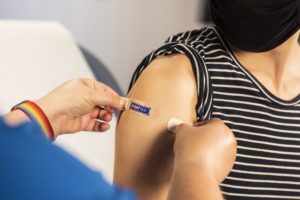
Using Communications to Promote Health Equity
The COVID-19 pandemic has highlighted the increased need for health equity advocacy, awareness and public education. When it comes to advancing public health, effective healthcare communication can improve the quality of services offered to culturally diverse communities. With the Biden-Harris administration’s recent announcement that billions of federal dollars will help communities hit hardest by the pandemic, including $2.25 billion in grants to promote health equity, bridging the gap between nationwide health disparities is top of mind.
Defining Health Equity
Before we discuss how healthcare organizations can communicate information in ways that improve health equity, we must first define the term. According to the World Health Organization, health equity is defined as: “An absence of unfair and avoidable or remediable differences in health among population groups defined socially, economically, demographically or geographically.” In other words, non-medical factors that influence health outcomes, including education, housing, job security and access to affordable healthcare services.
Communicating effectively requires a strategy focused on media advocacy – the use of mass media to advance public policy and raise awareness about social issues. Engaging the media allows for greater interaction with a broad range of stakeholders, making the issue more visible to the public.

Developing Your Plan
Before choosing a strategy for your campaign, your organization must first determine what goes into an effective media advocacy plan:
-
Researching the media landscape: Conducting this research in the planning stages of your campaign helps your team assess trends and understand which media your target audience consumes and the best channels to reach them.
-
Developing a relevant list of media contacts: When securing earned media, identifying relevant media contacts ensures your target audience will be reached. Use media monitoring to see which news outlets and reporters are covering your issue and read articles written by relevant journalists to understand their angle.
-
Composing key messages: Once you have identified your target audience and a call to action, you should next develop convincing and specific messaging to communicate your advocacy goals and demonstrate why raising awareness around health equity is key to advancing public health.
-
Defining tactics: Planning your media advocacy tactics is important to ensure you maximize the impact of your outputs. When developing tactics, evaluate each as it relates to your audience and objective and consider what is reasonable to execute given your budget, timeline and scope of work.
-
Identifying a spokesperson: Identifying a credible source in the eyes of your target audience is key for a successful media advocacy campaign. For example, if your campaign is focused on the intersection of race and access to affordable healthcare, it is wise to offer media interviews with a spokesperson of color.
-
Evaluating your campaign results: Throughout your campaign, monitor its impact and the level of support from key stakeholders. You can do this by measuring the number of media placements, monitoring digital engagement on social media platforms and press participation in virtual or in-person campaign events.

Choosing a Strategy
Once you have developed a plan, it is time to choose your strategy. There are three types of media used in advocacy campaigns – earned, paid and owned. When deciding which strategy is best for your organization, consider the following:
-
Earned Media: This type of coverage has the added benefit of legitimacy in the eyes of key stakeholders and audiences – if the media has chosen to cover the issue, it must be important – and has the potential for wide reach and can be leveraged in future owned and paid efforts.
-
Paid Media: Purchasing media opportunities through known media channels allows healthcare organizations to control the message, ensuring when and how the output is presented.
-
Owned Media: Disseminating messaging through internal communication channels can include organizational branding and provide your organization’s stance on the issue of health equity.
It is on healthcare organizations to call awareness to issues of health equity, which exist across all healthcare practices. While media advocacy campaigns are not a solution to the problem, using effective communication to bring awareness to global and nationwide health disparities is a step in the right direction.
Want to talk more about health equity advocacy programs for your organization? Email us at lets_talk@pcipr.com.


